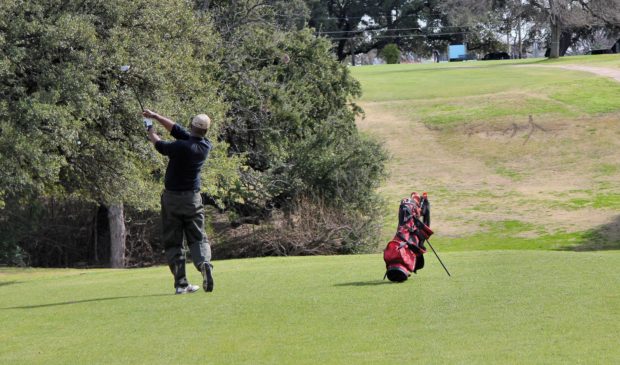Discussions continue about Hancock Golf Course’s insolvency
Tuesday, December 8, 2020 by
Sean Saldaña Parks and Recreation Assistant Director Anthony Segura and Division Manager for Golf Operations Kevin Gomillion gave an update on the community engagement status of the Hancock Golf Course’s revenue troubles at the Dec. 4 special Parks and Recreation Board meeting.
A six-year financial analysis reveals that since 2015, the golf course has lost over $1 million – between $118,000 and $260,000 a year. At the moment, losses for the Hancock Golf Course, along with other public courses, are subsidized by the city’s General Fund.
A 2019 report from the National Golf Foundation recommended anywhere from $700,000 to $900,000 in facility-wide renovations on irrigation, maintenance equipment, greens, and upgrades to the clubhouse – though the report also outlined that these renovations are “not likely to lead directly to increased revenue.”
While the Hancock course has managed to rein in its finances by reducing staff and maintenance costs, there are still doubts about the course’s ability to break even, much less turn a profit. The National Golf Foundation concluded with, “The recent economic performance suggests that Hancock GC will always be challenged to support an ‘enterprise’ threshold.”
In the year and a half since the report was released, discussions around next steps have continued.
During the meeting, Gomillion noted that one of the challenges is the different set of expectations golf faces compared to other city sports programs, saying, “The simplest way for me to explain that to most people is to say we were supposed to cover the cost of our operations with revenue generation.”
At the moment, the city is still considering a few different options for shoring up finances at Hancock. The first option is to stop golf operations and turn the course into a lower-cost park. The second option is to double down and modernize the course. The final option calls for the city to partner with a third-party company to split the costs of operations.
Of the proposals, private partnership has been the most controversial, but during the meeting Gomillion assured attendees it was a viable option, saying that “third-party concessionary operations scares some folks because they think that means privatization. But in reality, we have concessions … throughout (city golf) operations.”
Gomillion clarified that currently the city has not “gone out in any direction, but that’s why we’re continuing to go through this community engagement.”
The engagement process started on Feb. 29 of this year, but like many projects, was slowed down as coronavirus cases began to spread during the spring. The next milestone in the project’s timeline was set for late October, but the two community engagement sessions were canceled in part due to the overwhelming community response.
“We decided at that point that we needed to take this in smaller doses so that everybody had a voice,” Gomillion said.
The city spent the month of November meeting with advocacy groups and getting a better understanding of public opinion.
Despite continuing losses, there remain some signs of hope for city golf courses.
Gomillion said city courses set records for usage in October and November and he has optimism for the trend continuing, stating, “We could be six or seven months from now with numbers going in that positive direction.”
It was made clear during the meeting that the next several months of course usage could influence next steps in the adjustment process.
The city plans to spend the first few months of 2021 on administering community surveys and engaging the public further and to have a recommendation to the Parks and Recreation Board in April.
After the presentation, Gomillion and Segura answered questions from the parks board about various revenue structures and possible demographics tracking on course usage.
But more than anything, the discussion centered around preserving the course’s historical significance.
Board Member Rich DePalma concluded his comments by saying, “This will be sustainable. I think it has a beautiful history. Maybe it wouldn’t have included me in part of that history back when it opened, but nonetheless … when the whole board is able to get educated on the history of Hancock Park golf course and rec center they can make an informed decision or recommendation.”
The Austin Monitor’s work is made possible by donations from the community. Though our reporting covers donors from time to time, we are careful to keep business and editorial efforts separate while maintaining transparency. A complete list of donors is available here, and our code of ethics is explained here.
You're a community leader
And we’re honored you look to us for serious, in-depth news. You know a strong community needs local and dedicated watchdog reporting. We’re here for you and that won’t change. Now will you take the powerful next step and support our nonprofit news organization?









